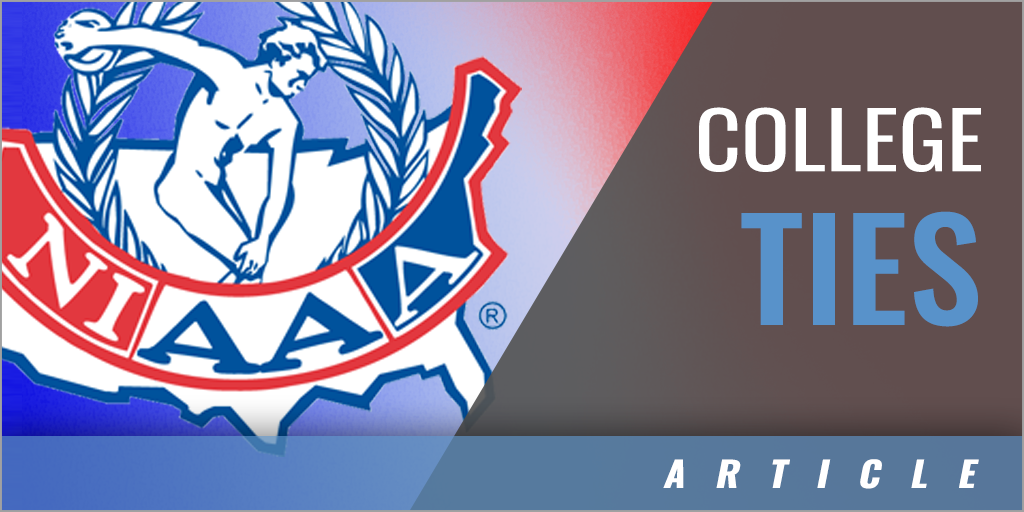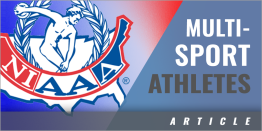|
By: Gary Stevens - Thornton Academy, Saco, Maine The work of a high school athletic director in the current economic and work climate is filled with challenges of all types and magnitudes. The most successful leaders in today's American schools are those who have the ability to tackle a wide variety of problems with tenacity, skill, and ingenuity. Where resources are thin, athletic administrators take on the persona of the fictional character MacGyver within their communities and school systems; they must be creative and utilize "out of the box" thinking to maintain and sustain their programs. Community-based resources play a huge role in assisting athletic directors in offering quality programming to their students. Booster groups are key school partners who raise money to purchase equipment and services that supplements funding in the school budget. Coaches routinely utilize local volunteers to perform a variety of tasks, such as keeping statistics, filming practices and contests, and performing managerial services. In many communities, athletic directors rely upon the availability of nonpaid coaches to perform valuable roles as assistants. An increasing number of high school athletic administrators are utilizing another valuable resource that can assist in addressing an interscholastic program's basic personnel, services, and facilities needs. School systems located in communities that include or lie near postsecondary educational institutions oftentimes rely upon those organizations for a variety of essentials required for their athletic programs. Their experiences serve as strong reminders of the value inherent in partnerships with higher education. In many communities today, high school athletic programs and universities co-exist in a symbiotic relationship that has proven to be mutually beneficial. Pool Play: Widening the Base of Applicants Certainly one of the greatest challenges faced by athletic directors today is filling the numerous job openings that occur on an annual basis. In particular, subvarsity and middle school coaching positions are oftentimes difficult to fill. Many athletic administrators schedule practices and contests for these participants in the mid-afternoon, making it difficult for non-teachers to fit those responsibilities into their personal and work schedules. A number of athletic directors whose schools are near colleges and universities have found those institutions to be fertile ground for filling these vacancies. College students frequently schedule their courses in the morning or early afternoon. Furthermore, they oftentimes seek part-time employment to earn additional income to assist in their school expenses. Students enrolled in education (particularly physical education), coaching, or sports management programs may be looking for a hands-on experience that not only prepares them for their future careers, but also may be attractive to potential employers when examining their resume. Athletic administrators seeking to utilize college and university resources for expanding their pools of applicants might consider employing one or more of the following strategies:
When hiring college-age coaches, particularly alumni, one must be cognizant of boundary issues that can occur due to minimal age differences or familiarity between coaches and players. Although there have been successful high school varsity coaches who have been as young as college sophomores, an athletic director should be wary about age differences of less than four years. Placing a college student in a position in which he or she is coaching family members, particularly younger brothers or sisters, may be setting the coach up for failure. More than one young coach has failed due to perceived concerns about conflict of interest or interpersonal behaviors that are unacceptable. Regardless, the importance of maintaining appropriate boundaries (including how players address the coach) must be emphasized during the job interview and throughout the supervision process. Athletic administrators hiring college students may consider placing them in positions where age differences are most pronounced, such as:
High school athletic administrators have also expanded their coaching candidate pools by incorporating current or retired collegiate coaches into the fold. Particularly for NCAA Division III schools, their coaching staffs may include personnel who may have interests and skills outside the sport area they coach in the college setting. The local college cross country coach may be a logical (and excellent) candidate for the middle school or high school track and field opening that one has in the spring. Similarly, many retired college coaches may have an interest in returning to their coaching roots to work at the high school. For example, a retired college basketball coach (with 660 Division III victories) living in the southern Maine area recently accepted a position as a high school varsity girls basketball coach at an independent school and a junior varsity golf coaching position at a second one. Fields of Dreams Many collegiate athletic programs, even at the Division III level, offer top-notch facilities. As a means of recruiting top student-athletes to their institutions and being successful in the activities that they offer, these schools routinely build high-quality outdoor venues, swimming pools with spectator seating, expansive field houses equipped with track and field facilities, and ice hockey rinks. In colder climates, universities have installed turf fields to allow play in all types of weather, particularly during the short spring season. Colleges and universities have discovered that one of the best recruiting tools at their disposal - for both athletes and non-athletes - is providing opportunities for high school age students to visit their campuses and play in those facilities. In addition to summer camps, these schools have found that renting those venues to local high schools for their contests provides opportunity to generate income in the short term (through rental contracts) and the long run (in the form of tuition). High school athletic directors that offer ice hockey, indoor track and field, and swimming and diving must budget accordingly for rental of off-campus facilities for practices and contests. Given that most schools do not boast on-site venues to hold these activities, colleges and universities that have these facilities are natural and necessary partners. In some cases, high school athletic programs may be able to use facilities for reduced rental fees by taking advantage of hours and times of the year when the college is either not using them or not in session. College facilities are also critical resources to consider utilizing when inclement weather patterns threaten to interrupt a season. The high school athletic director might consider renting an indoor college facility for a tennis match when Mother Nature does not cooperate with the regular schedule. Similarly, the local university's turf field could prove to be an asset when one's grass fields are not playable. In any case, athletic directors who may need to utilize these facilities should build contingency funding into their budgets in the event that it becomes necessary to play a home contest away from home. In some cases, the relationship between a high school and the local college can be mutually beneficial. There may be some occasions when college athletic programs may request the use of high school facilities for practices or contests. It may be beneficial, in those instances, to give the college program a complimentary rental or reduced rate. The courtesy of offering the facility at a cut rate or no charge could result in a return in-kind from the school when asked to use its facilities. At the same time, building the partnership may prove to be a positive public relations move that may prove beneficial to a high school student-athlete in his or her college recruitment process. Partnerships and Professional Development High school athletic administrators recognize that college athletic programs offer outstanding professional development opportunities for their coaches as well. Many universities offer coaching clinics during the off-season, and their coaching staffs may provide high quality professional development at a reasonable cost. These clinics may include live demonstrations from college players, some of whom may be alumni of one's school. In some circumstance, collegiate coaches may be willing to work directly with high school coaching staffs to help them increase their craft knowledge or assist them in the organization of their programs. Small college coaches may be willing to serve as guest clinicians at one's summer camp. Many college athletic coaches allow high school coaches to become part of e-mail lists or mass mailings to communicate news about their programs or to share drills or coaching ideas. Other Opportunities The relationship between colleges and universities and high school athletic programs continues to grow as personnel in each educational setting understand their mutual interests. Among the ideas that high school athletic directors may consider in enhancing their programs are:
High school athletic administrators whose schools lie within a short distance of a college or university should actively consider how they might take advantage of this valuable resource. Postsecondary educational institutions have long understood the value of stewardship to their communities and regions; their reputations as community members and their futures (in terms of attracting enrollment) depend upon it. Setting up a meeting with the athletic director, a member of the coaching staff, or other personnel in its athletic department is the starting point in developing and building a relationship that may help a high school athletic program grow and benefit the student-athletes it serves. |






